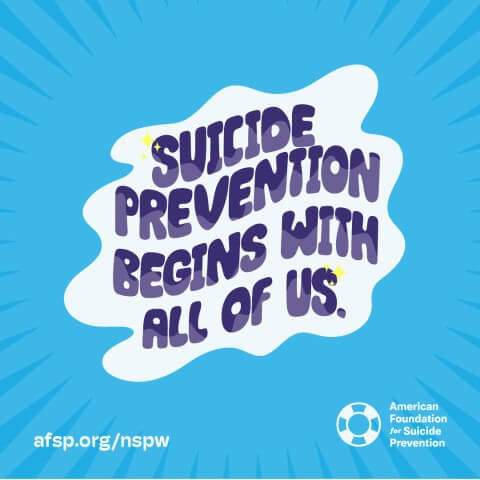
Suicide Prevention – Seek Help With These Supportive Resources
 September is Suicide Prevention Awareness Month — a time to raise awareness of this stigmatized, and often taboo, topic. It is hoped that this initiative will help to shift public perception, spread hope and share vital information to people affected by suicide. The goal of the various suicide prevention organizations is ensuring that individuals, friends and families have access to the resources they need to discuss suicide prevention and to seek help.
September is Suicide Prevention Awareness Month — a time to raise awareness of this stigmatized, and often taboo, topic. It is hoped that this initiative will help to shift public perception, spread hope and share vital information to people affected by suicide. The goal of the various suicide prevention organizations is ensuring that individuals, friends and families have access to the resources they need to discuss suicide prevention and to seek help.
Here are some alarming statistics:
Individual Impact:
- 79% of all people who die by suicide are male.
- Although more women than men attempt suicide, men are 4x more likely to die by suicide.
- Suicide is the 2nd leading cause of death among people aged 10–14 and the 3rd leading cause of death among people aged 15-24 in the U.S.
- Suicide is the 12th leading cause of death overall in the U.S.
- 46% of people who die by suicide had a diagnosed mental health condition – but research shows that 90% may have experienced symptoms of a mental health condition.
Community Impact:
- Annual prevalence of serious thoughts of suicide, by U.S. demographic group:
- The highest rates of suicide in the U.S. are among American Indian/Alaska Natives followed by non-Hispanic whites.
- Lesbian, gay and bisexual youth are nearly 4x more likely to attempt suicide than straight youth.
- Transgender adults are nearly 9x more likely to attempt suicide than the general population.
- Suicide is the leading cause of death for people held in local jails.
Data from CDC, NIMH and other select sources.
Warning Signs of Suicide:
Experts cite some of the warning signs of suicide. “Major change in mood or behavior; high-risk behaviors such as drug use; expressing feelings of hopelessness; self-harm such as cutting or burning; change in energy, appetite or sleep schedule” If someone you know exhibits some or any of these warning signs there are ways to help. Encourage them to discuss any suicidal thoughts they may have. Encourage them to seek counseling.
FOR MORE INFORMATION ON SUICIDE PREVENTION:
In Ohio, the Ohio Suicide Prevention Foundation is an excellent resource for suicide prevention information. Their website is https://www.ohiospf.org/. Ohio has a vast network of suicide prevention coalitions representing counties all across Ohio.
- The number of the hotline for National Suicide Prevention is 1-800-273-8255. The Crisis Text Line can be contacted by texting “4hope” to 741-741. If you or someone you know is experiencing a mental health crisis, call or text 988 immediately.
- If you are uncomfortable talking on the phone, you can chat the Suicide & Crisis Lifeline at 988lifeline.org.
- You can also text NAMI to 741-741 to be connected to a free, trained crisis counselor on the Crisis Text Line.
If you see imminent danger, or are in doubt seek assistance from 911.
Suicide is such an alarming problem. Don’t be afraid to reach out to someone who seems to be going down this road. You can help make a difference in someone’s life!
Please consider joining or following us!© 2022, Ohio Family Law Blog. All rights reserved.

Attorney Robert “Chip” Mues has been focusing his legal practice throughout Southwest Ohio primarily in divorce and family law matters since 1978. Chip is passionate about family law and has proudly published the Ohio Family Law Blog since 2007. In addition, he previously managing the Dayton law firm of Holzfaster, Cecil, McKnight & Mues LPA until it dissolved on December 31, 2024. He recently has founded MUESLAW in 2025. To learn more about him or MUESLAW, visit www.MuesLaw.com. Appointments are available in person, over the phone or by Zoom. Call us at 937 293-2141.



